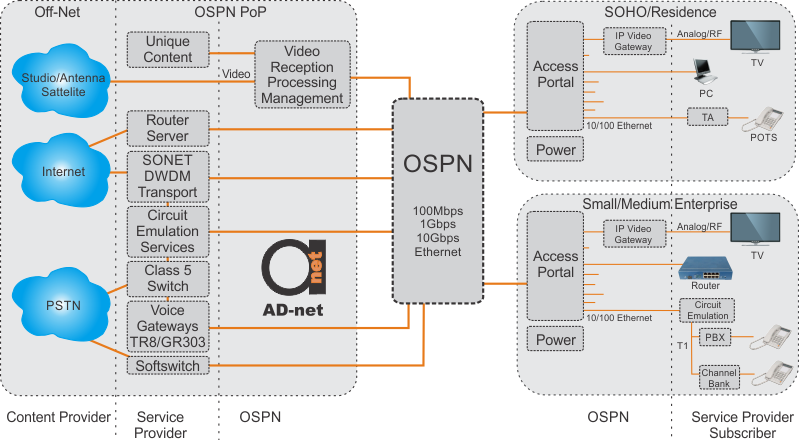The native data applications are using layer 2 Ethernet infrastructure. These applications are using common standards so the network is required to support only couple of options of application delivery. Those interfaces could be divided in two main categories:
- The Access Portal located at the customer premises is the media conversion point and traffic mapping interface, for data applications.
- Optical Interfaces are using both single and multi-mode data interfaces. Those interfaces are managed directly from Open Service Provider Networks (OSPN) access distribution switches.
In some scenarios a terminal adapter could be deployed by the service provider, although standard applications should not require end-user to change their telephony device. Best solution is the integration of the voice gateway function into the Access Portal. As it was specified, Access Portal is providers equipment, so it does not require additional costs from customer side. This integration is allowing implementation of critical services like E911 with higher reliability as well as such features like uninterruptible power supply.

Figure 1. Network demarcation
For the video based services, it is crucial to support existing TVs and receivers by delivering standard video signal, while not requiring customers to upgrade all of their equipment.
Both, users and service providers are getting benefits from re-using existing interfaces. If the provider would require rebuilding and integrating of new equipment with their own residential gateway that would leave only largest and most resource-rich providers functioning. Using global standards for their services, while implementing them through the existing network would allow small providers to deliver their services to the end user.
Similar topics:
FTTH Definition & Definition of the residential area network
Way of thinking for FTTH operators and network owners
Choosing network architectures and protocols – fictional large scale service provider reviewed


